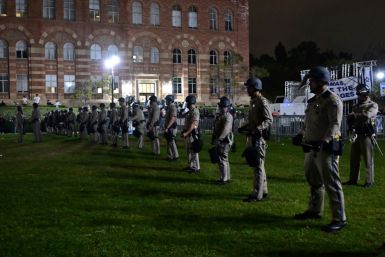China Opposes US Missile Shield in Korean Peninsula: US-South Korea Joint Military Drill From March 2

China has voiced concerns about the planned deployment of a missile defense asset by the United States in South Korea, to counter the threat from North Korea. But many analysts are wondering why Beijing must bother too much, despite the fact that interception system is mainly defensive in nature and does not pose any serious security threat to China.
Still the Chinese opposition to the Theater High-Altitude Area Defense system or THAAD is going severe and some see it as a calibrated effort to pre-empt any negative ramifications for China’s security or weaken the U.S. alliance with South Korea, reports Korea Herald.
Defensive System
Military experts are of the view that contrary to speculations, THAAD cannot not shoot down Chinese intercontinental ballistic missiles aiming the U.S. mainland, or pose any tangible missile threat to China, even if the shield is stationed on the peninsula. This has been explained by a senior analyst, who said, “the THAAD interceptor has a range of 200 kilometers. Its range means that a THAAD interceptor based at Osan Air Base, a likely U.S. option for the potential deployment could not reach as far north as Pyongyang as it would fall about 65 kilometers short,” according to Bruce Bennett, who is with the U.S. think tank RAND Corp.
Bruce noted that though THAAD is wholly defensive in function, and capable of targeting only North Korean missiles aimed at South Korea, China’s officials including Defense Minister Gen. Chang Wanquan have been voicing public opposition to THAAD.
It is gauged that there is a sub text to China’s complaints and they are linked with its efforts in recent years to enhance the military capabilities to keep hostile forces at bay with a mix of arsenal including cruise and ballistic missile, bombers, and other advanced weapons with longer operational ranges, lethality and accuracy. China has concerns that the deployment of THAAD in the peninsula could weaken its advanced systems like A2/AD which have anti access and anti-denial capabilities, some observers noted.
China’s A2 and AD Systems
To overcome the A2/AD challenges, the U.S. has been devising of “offsetting” concepts by creating an efficient joint force capable of handling security threats in all domains such as air, land, sea, space and cyberspace. It is also the crux of AirSea Battle with the backbone being a sturdy missile defense to enable U.S. forces to block hostile missiles and access operational areas and maneuver within the areas.
Some analysts say China thinks the presence of a U.S. missile shield neraby could complicate its nuclear strategy, which is based on deterrence with the hidden threat of an assured second strike as retaliation. But robust deterrence works only when it is clear that an act of aggression can be given a response of unacceptable damage. But that prospect can falter if the adversary believes it has the defense mechanisms in place to counter a retaliatory strike. That time deterrence can flop.
For China, faced with a nuclear imbalance of some 250 nuclear warheads, according to the Global Nuclear Weapons Inventories in 2014, compiled by the Bulletin of Atomic Scientists against the arsenal of above 7000 by the U.S, a reliable second-strike capability is vital. More so, in the light of its strategic rivalry with the U.S. in the Asia-Pacific. So, any U.S reinforcements in the region can rattle China’s defence planners, adds the report.
Military Drills
Meanwhile, the U.S. and South Korean militaries will begin their annual joint winter drills in South Korea on March 2, reports Wall Street Journal.
The exercises will involve hundreds of thousands of American and South Korean troops. The drill will involve computer simulations and field exercises. It will be wrapped up on April 24.
(For feedback/comments, contact the writer at kalyanaussie@gmail.com)






